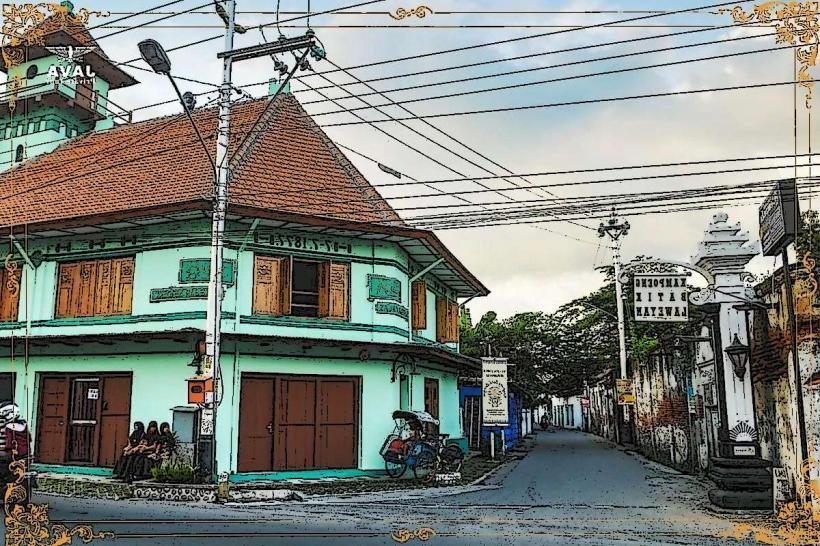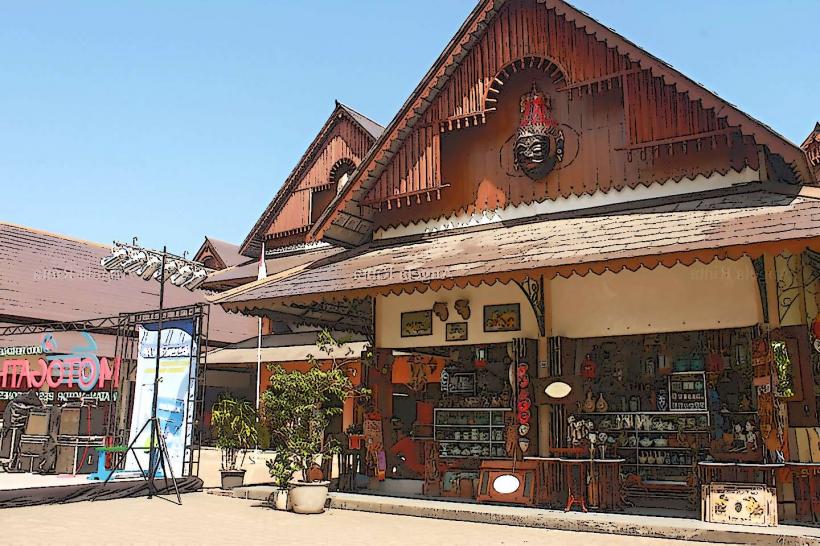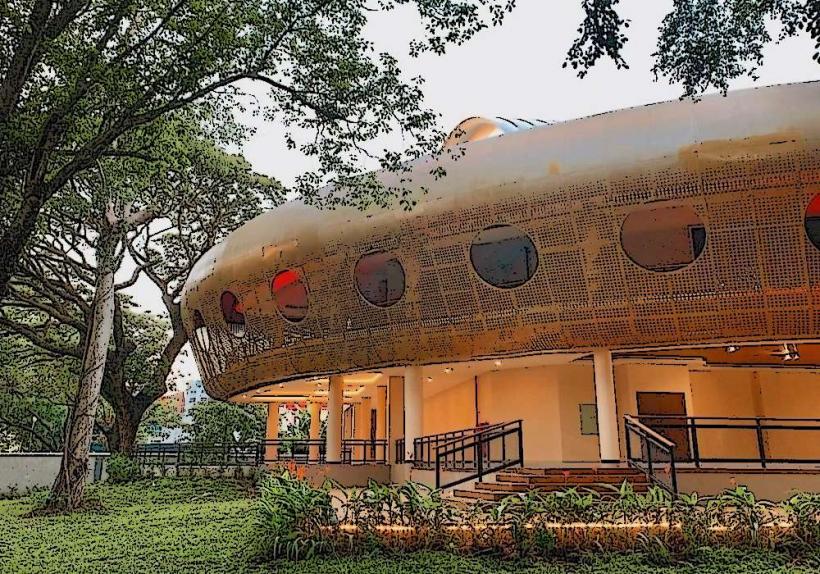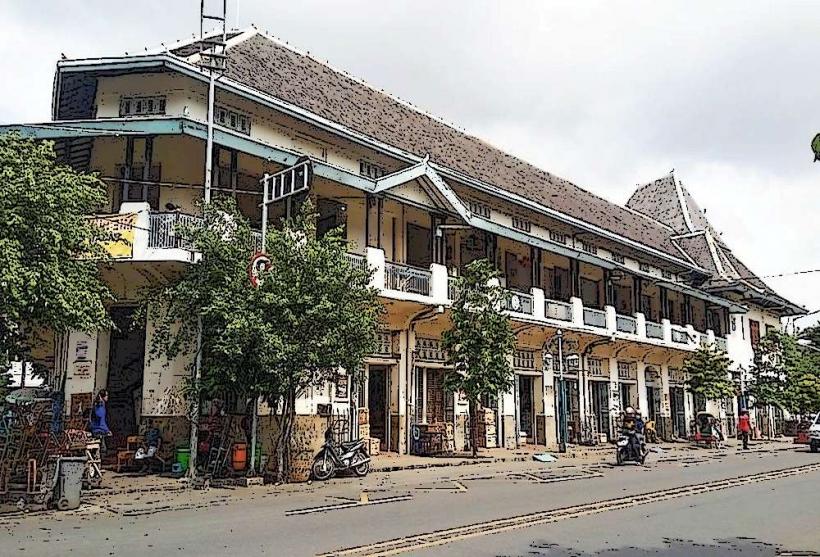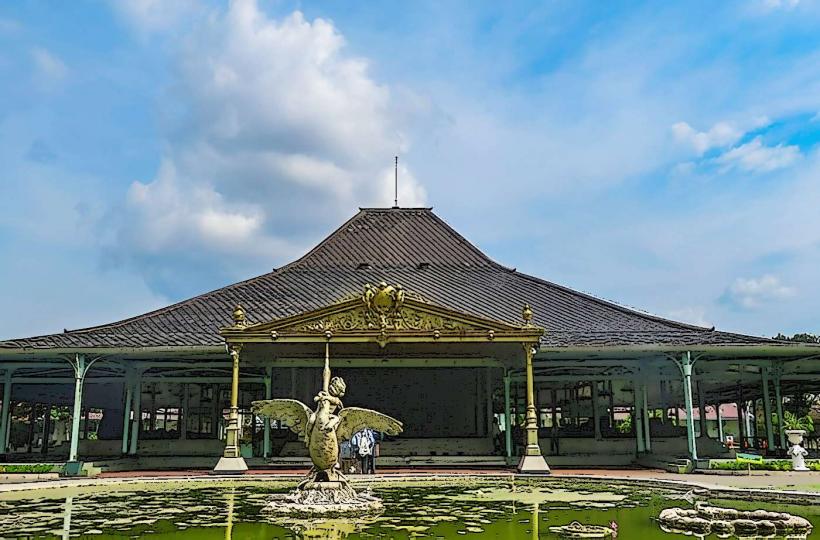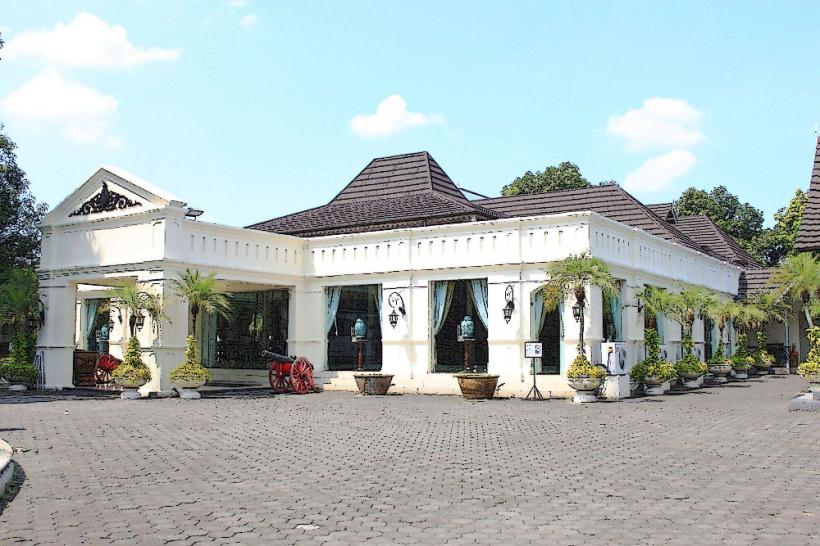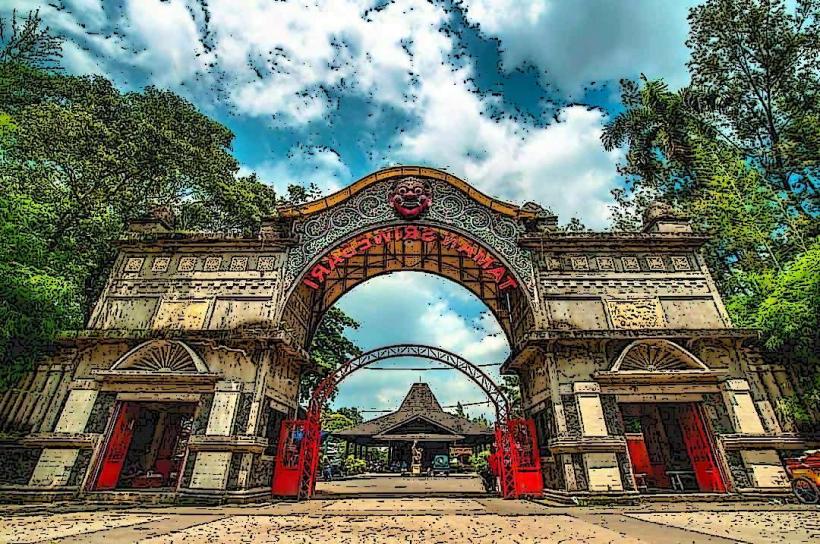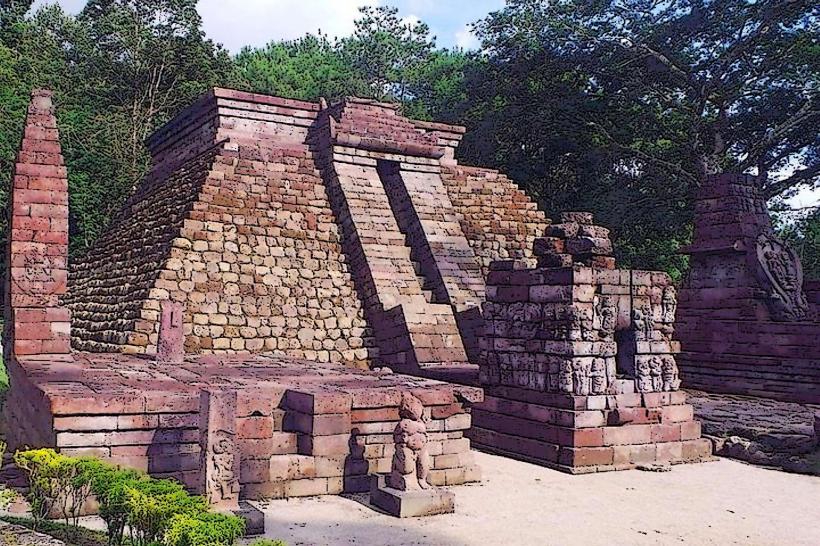Information
Landmark: Keraton SurakartaCity: Surakarta
Country: Indonesia
Continent: Asia
Keraton Surakarta (Surakarta Palace): A Historical and Cultural Landmark
Keraton Surakarta, also known as the Surakarta Palace or Kraton Surakarta, is a royal palace located in Surakarta, Central Java, Indonesia. It is one of the most significant and well-preserved examples of Javanese royal architecture and is an essential cultural symbol of Javanese heritage. The palace serves not only as a historical landmark but also as the center of Javanese culture, traditions, and royalty.
1. Historical Background
Establishment:
- The Surakarta Palace was established in 1745 by Susuhunan Pakubuwono II, the ruler of the Mataram Sultanate, following the division of the Mataram Kingdom into two parts after the signing of the Giyanti Agreement. This division resulted in the formation of two royal courts: the Surakarta Sunanate in the east and the Yogyakarta Sultanate in the west.
- The Keraton Surakarta became the official seat of power for the Sunan of Surakarta, and it has remained the center of the royal family and their court rituals ever since.
Royal Significance:
- The Surakarta Palace has been the seat of the Surakarta Sultanate (also known as the Sunanate of Surakarta). The Sultan (or Sunan) is the traditional ruler and figurehead of the royal family in Surakarta.
- The palace has long been a symbol of the Javanese royal heritage, where both political and cultural activities have taken place throughout its history.
2. Architectural Features
Traditional Javanese Architecture:
- Keraton Surakarta is a prime example of Javanese traditional architecture with a blend of Islamic and Hindu-Buddhist influences. The design reflects the cultural and religious diversity of Indonesia, with structures built using wooden and stone materials.
- The palace is composed of several important structures, including the Siti Hinggil (royal audience hall), the Pendopo (the open pavilion), the Kedhaton (inner palace), and various gardens and courtyards.
Main Buildings:
- Pendopo Agung: The central pavilion of the palace, open to the public, is where royal audiences and ceremonial events are held. It has a large thatched roof and serves as a place for court performances, including traditional Javanese dance and music.
- Kedhaton: The heart of the palace, this is where the Sunan and the royal family reside. The Kedhaton is a sacred space and is not typically open to the public.
- Siti Hinggil: A ceremonial hall used for royal events, such as the Coronation of a new Sunan.
- Museum Keraton Surakarta: The palace complex houses a museum that showcases a vast collection of royal artifacts, including traditional clothing, jewelry, weaponry, historical documents, and paintings, offering visitors an insight into the history of the Surakarta Sultanate.
Influence of Javanese Culture:
- The palace's architecture is a physical representation of Javanese cosmology. The layout is designed to symbolize the balance between heaven and earth, with the Pendopo at the center serving as a place of harmony between the spiritual and physical realms.
- The decorative elements of the palace, such as the intricate wood carvings and batik patterns, reflect Javanese aesthetic traditions. The use of symbolism in architecture is deeply rooted in Javanese beliefs and reinforces the concept of divine kingship.
3. Cultural and Ceremonial Significance
Court Rituals and Traditions:
- The Surakarta Palace is a center for Javanese court rituals and royal ceremonies. The Sunan and his court perform regular rituals to uphold the traditions and spiritual practices of the Javanese royal family.
- One of the most important events at the palace is the Gusti (royal wedding) and Slametan (communal feast), which are traditional celebrations tied to Javanese beliefs about harmony with the spirit world.
Annual Festivals:
- The palace hosts several important royal festivals throughout the year. One of the most famous is the Sekaten Festival, held in honor of the birth of the Prophet Muhammad, featuring a grand procession and traditional gamelan music performances.
- Another notable event is the Sungkem Ceremony, where members of the royal family pay their respects to their ancestors and the Sunan in a ritual of devotion and reverence.
Javanese Dance and Gamelan Music:
- The palace is a venue for Javanese dance performances, which are essential components of Javanese court culture. Dances often tell stories from Javanese mythology or historical events.
- Gamelan music, the traditional ensemble of percussion instruments, is central to the palace's cultural identity. Performances of gamelan are integral to royal rituals and celebrations, with the gong and xylophone-like instruments creating a distinctive sound.
4. The Role of the Sunan (King) in Surakarta
The Sunan’s Authority:
- The Sunan of Surakarta is considered both a secular ruler and a spiritual leader. The position carries great cultural and religious significance, with the Sunan seen as a descendant of the gods and the protector of the Javanese people.
- While the political role of the Sunan has diminished in modern times, the Sunanate still holds immense cultural influence, especially during ceremonial events and traditional practices.
Leadership and Politics:
- The palace played a crucial role in local and regional politics, particularly during the time of the Mataram Sultanate. Despite the Dutch colonial influence in Java, the Surakarta Sultanate retained some degree of autonomy until the early 20th century.
- The Sunanate was often involved in the struggle for independence and continues to play a symbolic role in Javanese identity today.
5. Museum Keraton Surakarta
The palace also functions as a museum dedicated to the history of the Surakarta Sultanate. Visitors can explore various royal collections, such as ancient manuscripts, regal costumes, ceremonial items, and historical art. The museum provides a fascinating insight into Javanese royal life and its centuries-old traditions.
Key items in the museum include the Keris (traditional Javanese daggers), batik textiles, royal regalia, and historical documents that tell the story of Surakarta's sultanate, and they highlight the art, culture, and religion that influenced the kingdom.
6. Visiting Keraton Surakarta
Opening Hours:
- Keraton Surakarta is open to the public, and visiting hours typically run from 8:00 AM to 4:00 PM, with regular tours available in the morning and afternoon.
How to Get There:
- The palace is located in Surakarta (also known as Solo), a city in Central Java, which is easily accessible by car or bus from nearby cities like Yogyakarta or Semarang. The palace is centrally located within the city, and a visit to the surrounding area is often combined with other attractions in Surakarta.
What to Expect:
- Visitors can expect to be immersed in the rich history of the Surakarta Sultanate, with the opportunity to explore the palace grounds, traditional performances, and the royal museum. The palace complex is serene, with well-preserved buildings and a deep sense of tradition.
7. Conclusion
Keraton Surakarta is an iconic symbol of Javanese heritage, offering a fascinating glimpse into the royal history, cultural practices, and architectural beauty of Central Java. The palace serves as both a living monument to the past and a continuing center of Javanese royal culture, making it an essential destination for anyone interested in Indonesia's rich traditions and history. Visitors to Keraton Surakarta can experience the splendor of Javanese court life, traditional performances, and the awe-inspiring architecture that has stood for centuries.

